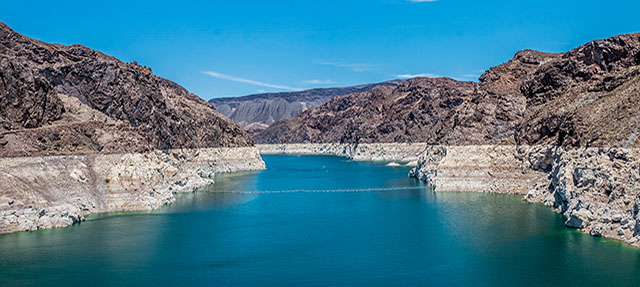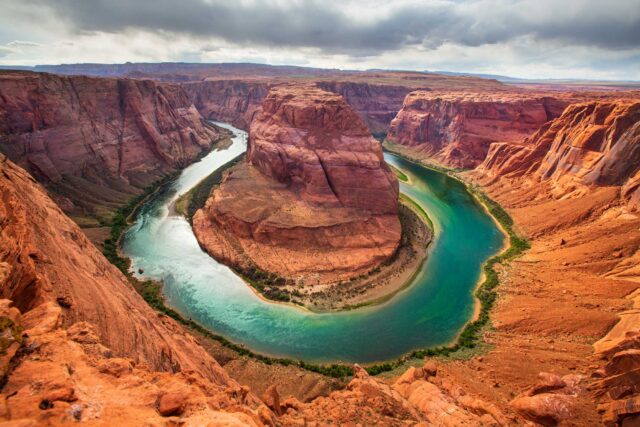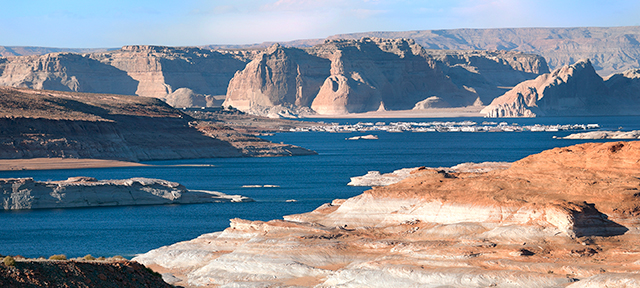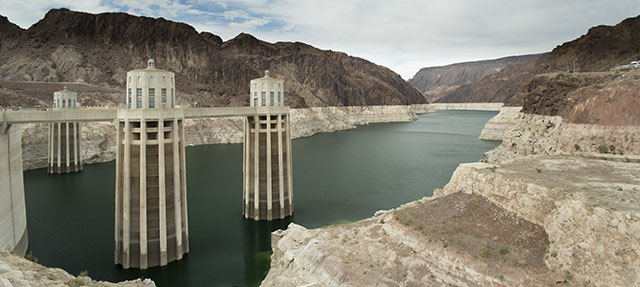A historic drought has desiccated much of the American West, bringing reservoir levels to record lows and stoking fears of catastrophic wildfires across the region. We spoke with two members of the Water Policy Center research network and experts on the Colorado River: Dr. Bonnie Colby of the University of Arizona (she’s also a member of the Colorado River Research Group) and John Fleck of the University of New Mexico. Prepare to be surprised: we encountered some delightful optimism in this wide-ranging conversation.
PPIC: How are Colorado River Basin states, including California, working together to manage the current drought?
John Fleck: California has the largest water right and the most sophisticated institutions for moving water around. The Metropolitan Water District of Southern California has more water than it needs right now, and it’s using that supply to help other folks along the river at this difficult time. You’re seeing the fruits of 20 years of sometimes contentious but ultimately successful collaborative decision-making frameworks, combined with conservation successes in Southern California.
Bonnie Colby: Everybody knows we’re moving into a serious situation. State and federal officials have been tracking reservoirs and groundwater levels, and tribal nations are involved in a way that they never have been before. That’s much needed, from a social justice perspective, and because they’re holders of the most senior rights in the system. In Southern California, 20 years ago, all the water users were much more likely to lean on their legal entitlements and litigation. We see much more flexibility nowadays—there’s been big progress.
With Lake Mead and Lake Powell at record lows, are we nearing a shortage declaration?
JF: The short answer is yes. This will reduce water flowing to Arizona and Nevada, but they are ready for this. The risks come after two or three years of shortage. Under the shortage declaration, Mexico will also see its supply reduced. This is actually an important innovation: negotiations over the last decade have brought Mexico into the management regime. We used to say “water for seven states”; now it’s “nine states in two nations.” This is a major milestone.
BC: This is another great example of collaborative thinking finally overcoming fixed legal interpretations. Mexico hasn’t had water storage like the US, so the opportunity to store water in Lake Mead is a big improvement in flexibility—and a benefit for US water users. Irrigation districts are also improving irrigation practices, which benefits both sides of the border. To see Mexico and the US partnering over water storage and reducing consumption is something to be optimistic about.
JF: In fact, some of the most important and innovative restoration work in the Colorado River Basin is happening in Mexico, even as reservoir levels are dropping.
BC: Really great, adept negotiators worked across borders to make that happen. They’re working with water treatment plants to put more water in the Colorado River Delta, in places where it can make a big difference for habitat. This supports the fishing economy, recreational visitors, and nature-based tourism. People go to the river and the delta to celebrate holidays, especially at Easter. Recreational, cultural, and environmental values are starting to gain real traction in larger negotiations around who gets how much water to consume.
How is climate change responsible for what we’re seeing now?
JF: We watch the snowpack, because that usually tells us how much water we’ll have. But we are seeing less water make it into rivers when the snow melts. Warmer temperatures are leading to more evaporation of snow, and drier soils soak up more snowmelt before it can run off. You can’t count on the snow as much as you used to.
BC: Twenty years ago, we didn’t really appreciate the role of soil moisture in the basin. It was a black box: precipitation falls in the mountains, runoff occurs. It took a lot of new work and modeling to understand the role of accumulated soil moisture. In times of drought, soil is like a dry sponge, holding precipitation and not releasing it for stream flows.
JF: What’s happening on the Colorado River is alarming. Runoff in the basin dropped 20 percent in the 20th century; it could drop 10–20% more. We need to be able to say how we’ll reduce allocations across the basin in the future. If we don’t do that kind of planning now, we risk this collaborative framework collapsing into litigation and conflict. Things are changing faster than I expected, and that’s testing my optimism. But people are adapting, and that’s hopeful.





